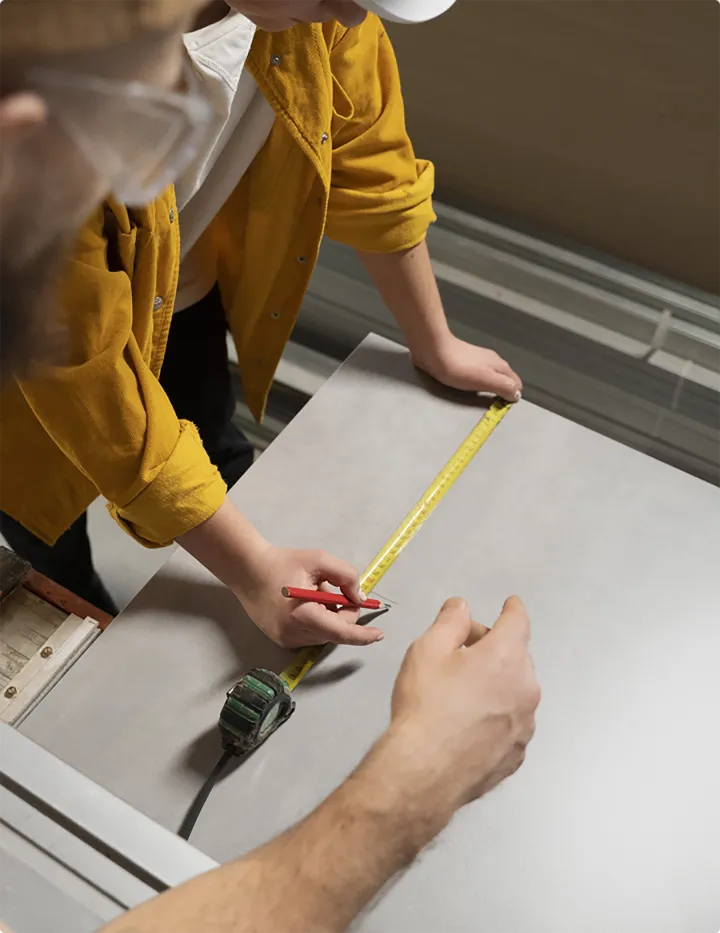Nov . 04, 2024 22:51 Back to list
mineral fiber ceiling
Understanding Mineral Fiber Ceilings Benefits and Applications
Mineral fiber ceilings have gained significant popularity in both commercial and residential spaces due to their outstanding acoustic performance, fire resistance, and overall versatility. Made from various materials, including mineral wool, fiberglass, and cellulose, these ceilings are engineered to improve indoor environments, making them essential in modern architecture and design.
Composition and Characteristics
Mineral fiber ceilings are typically composed of a blend of natural and synthetic materials. While mineral wool is a primary component, additives like starch and binders are introduced to enhance durability and performance. The resulting panels are lightweight, easy to install, and available in a range of finishes and textures, allowing them to complement various design aesthetics.
One of the standout features of mineral fiber ceilings is their excellent sound-absorbing properties. These ceilings can significantly reduce noise levels, making them ideal for spaces requiring acoustic control, such as offices, classrooms, and healthcare facilities. The porous structure of mineral fiber allows sound waves to penetrate the surface, diminishing reverberation and creating a more peaceful environment.
Fire Safety and Sustainability
In addition to soundproofing, mineral fiber ceilings are known for their fire-resistant characteristics. Many products in this category can withstand high temperatures without releasing toxic fumes, providing an added layer of safety in case of fire. This makes them suitable for use in commercial environments where fire codes and regulations are stringent.
From a sustainability perspective, many manufacturers are committed to minimizing the environmental impact of their products. Numerous mineral fiber ceiling tiles are made from recycled materials and are themselves recyclable, aligning with green building certifications such as LEED (Leadership in Energy and Environmental Design). The use of mineral fiber can also contribute to better indoor air quality, as they are often designed to resist mold and mildew.
mineral fiber ceiling

Installation and Maintenance
Installing mineral fiber ceilings is relatively straightforward, often accomplished using a grid system that supports suspended panels. The lightweight nature of the tiles simplifies handling and reduces the physical strain associated with installation. Moreover, accessibility to plumbing and electrical systems is enhanced since these ceilings can be easily removed and replaced.
Maintenance of mineral fiber ceilings also requires minimal effort. Regular dusting and periodic cleaning with a damp cloth or sponge can keep them looking new, while most products resist staining, ensuring longevity and aesthetic appeal. If a tile becomes damaged, it is often easy to replace just the affected panel rather than the entire ceiling.
Versatile Applications
The versatility of mineral fiber ceilings extends across various applications. They are commonly found in educational institutions, where noise control is crucial to learning environments. Likewise, hospitals and clinics benefit from the soundproofing and germ-resistant features of these ceilings, contributing to patient comfort and recovery.
In commercial spaces, mineral fiber ceilings can enhance the aesthetic appeal of an office while serving functional roles, such as light diffusion and temperature regulation. Retail environments enjoy the customizable nature of these ceilings, as different finishes and designs can create a tailored shopping experience.
Conclusion
In conclusion, mineral fiber ceilings serve as an excellent choice for enhancing acoustic performance, ensuring fire safety, and contributing to sustainability in both commercial and residential settings. Their ease of installation, low maintenance requirements, and aesthetic versatility make them a favored option among architects and builders. As the demand for efficient, cost-effective building materials continues to grow, mineral fiber ceilings will undoubtedly remain a prominent feature in modern construction and design.
-
Durable Ceiling T Grid Systems | Easy InstallationNewsAug.29,2025
-
PVC Gypsum Ceiling: Durable, Laminated Tiles for Modern SpacesNewsAug.28,2025
-
Pvc Gypsum Ceiling Is DurableNewsAug.21,2025
-
Mineral Fiber Board Is DurableNewsAug.21,2025
-
Ceiling Tile Clip Reusable DesignNewsAug.21,2025
-
Ceiling T Grid Modular DesignNewsAug.21,2025







